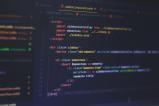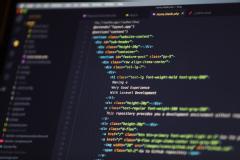Designing a web application for industrial training using Laravel involves creating a platform that facilitates efficient communication, and learning experiences. Here's a step-by-step guide to help you get started:
1. Project Setup: Start by setting up your development environment and installing Laravel. You can use Laravel's official documentation to guide you through the installation process.
2. Database Design: Identify the key entities in your system, such as Users (trainers and trainees), Courses, Training Sessions, Resources, and Administrators. Create database tables to store information related to these entities. Use Laravel's migration feature to manage database schema changes.
3. Authentication and Authorization: Implement user authentication and authorization. Laravel's built-in authentication system makes it easy to set up login and registration functionality. Create roles and permissions to control access to different parts of the application.
4. User Roles: Define user roles, such as Trainee and Trainer. Each role will have specific privileges and access to different sections of the application.
5. Dashboard: Design a user-friendly dashboard for both trainers and trainees. The dashboard should display relevant information such as upcoming training sessions, enrolled courses, and progress tracking.
6. Course Management: Allow trainers to create, edit, and manage courses. Each course can have multiple modules, resources, quizzes, and assignments. Trainees should be able to enroll in available courses.
7. Training Sessions: Implement a calendar or scheduling system to manage training sessions. Trainers can schedule sessions and assign them to specific courses. Trainees should receive notifications about upcoming sessions.
8. Resource Sharing: Enable trainers to upload resources like PDFs, videos, and presentations for each module. Trainees can access these resources after enrolling in a course.
9. Progress Tracking: Implement a tracking system that allows trainees to see their progress within each course. This could include completed modules, upcoming assignments, and quiz scores.
10. Notifications: Implement a notification system to keep users informed about important events, such as upcoming sessions, new resources, assignment deadlines, and forum discussions.
11. UI/UX Design: Create a user-friendly and responsive interface. Use modern design principles to ensure a pleasant user experience on both desktop and mobile devices.
12. Testing: Thoroughly test the application to identify and fix any bugs or issues. Implement unit testing and integration testing using Laravel's testing framework.
13. Deployment: Choose a hosting provider and deploy your Laravel application. Configure your server environment, set up a secure HTTPS connection, and optimize the application for production.
14. Continuous Improvement: Collect feedback from users and stakeholders to continuously improve the platform. Implement updates, new features, and optimizations based on the feedback received.








